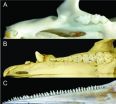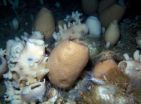(Press-News.org) MAYWOOD, Il. - A Loyola University Medical Center psychiatrist is proposing a new subspecialty to diagnose and treat patients who suffer both depression and heart disease. He's calling it "Psychocardiology."
In his most recent study, Angelos Halaris, MD, PhD, and colleagues found that an inflammatory biomarker, interleukin-6, was significantly higher in the blood of 48 patients diagnosed with major depression than it was in 20 healthy controls. Interleukin-6 has been associated with cardiovascular disease. Halaris presented findings at a joint congress of the World Psychiatric Association and International Neuropsychiatric Association in Athens, Greece. At the congress, Halaris formally proposed creation of a new Psychocardiology subspecialty.
Forty to 60 percent of heart disease patients suffer clinical depression and 30 to 50 percent of patients who suffer clinical depression are at risk of developing cardiovascular disease, Halaris said.
Stress is the key to understanding the association between depression and heart disease. Stress can lead to depression, and depression, in turn, can become stressful.
The body's immune system fights stress as it would fight a disease or infection. In response to stress, the immune system produces proteins called cytokines, including interleukin-6. Initially, this inflammatory response protects against stress. But over time, a chronic inflammatory response can lead to arteriosclerosis (hardening of the arteries) and cardiovascular disease.
It's a vicious cycle: depression triggers a chronic inflammation, which leads to heart disease, which causes depression, which leads to more heart disease.
Clinical depression typically begins in young adults. "Treating depression expertly and vigorously in young age can help prevent cardiovascular disease later on," Halaris said.
Physicians often work in isolation, with psychiatrists treating depression, and cardiologists treating cardiovascular disease. Halaris is proposing that psychiatrists and cardiologists work together in a multidisciplinary Psychocardiology subspecialty.
A Psychocardiology subspecialty would raise awareness among physicians and the public. It would forge closer working relationships between psychiatrists and cardiologists. It would formalize multidisciplinary teams with the requisite training and expertise to enable early detection of cardiovascular disease risk in psychiatric patients and psychiatric problems in heart disease patients. And it would provide continuing education to physicians in the safe and correct use of medications in cardiac patients who have psychiatric disorders.
"It is only through the cohesive interaction of such multidisciplinary teams that we can succeed in unravelling the complex relationships among mental stress, inflammation, immune responses and depression, cardiovascular disease and stroke," Halaris said.
###
Halaris is Medical Director of Adult Psychiatry and a Professor in the Department of Psychiatry and Behavioral Neurosciences at Loyola University Chicago Stritch School of Medicine.
New evidence for link between depression and heart disease
Psychiatrist proposes new 'psychocardiology' subspecialty
2013-02-19
ELSE PRESS RELEASES FROM THIS DATE:
In fight against cancer, a closer look at nuclear blebbing
2013-02-19
Misshapen cell nuclei are frequently observed in the cells of people with cancer and other diseases, but what causes the abnormality -- and why it is associated with certain disorders -- has remained unclear.
Researchers at Northwestern University have recently developed a mathematical model that sheds light on the defect by clarifying the mechanisms that cause bulges known as "blebs" in cells' nuclear membranes. The research -- a collaboration between experts at the McCormick School of Engineering and Applied Science and the Feinberg School of Medicine -- could be a ...
Nesting site protection 'key to save turtles from climate change'
2013-02-19
International marine scientists today warned it will be vital to protect key marine turtle nesting grounds and areas that may be suitable for turtle nesting in the future to ensure that the marine reptiles have a better chance of withstanding climate change.
A new study reveals that some turtle populations in the West Indian Ocean, Northeast Indian Ocean, North Pacific Ocean, East Atlantic Ocean and the East Pacific Ocean are among the least likely to recover from the impacts of climate change. Mariana_19feb_2
"To give marine turtles a better chance of coping with climate ...
5-ALA fluorescence guides resection of recurrent glioblastoma multiforme
2013-02-19
Charlottesville, VA, February 19, 2013. Neurosurgeons from UC San Francisco describe the use of 5-aminolevulinic acid (5-ALA) fluorescence in guiding resection of recurrent glioblastoma multiforme (GBM). Ingestion of 5-ALA by a patient before surgery leads to fluorescence of tumor cells intraoperatively in response to certain wavelengths of light. This can provide information not necessarily available through magnetic resonance imaging (MRI), the standard mode of imaging used to detect primary and recurrent GBMs. The additional information provided by 5-ALA fluorescence ...
How the whale got its teeth
2013-02-19
Whales are mammals, but they don't look like the mammals living around us, as they have a triangular fluke for tail, no hind legs and no body hair. And inside their mouths, their teeth are unfamiliar too – being much simpler and 'peg like'. A multidisciplinary team of researchers have now married together the fossil record and the embryonic development process to investigate how the whale got its teeth.
Most mammals have four kinds of teeth, each shaped for specific tasks. In most mammals there are wedge-shaped incisors, a pointy canine, and premolars and molars with ...
Stillbirth in Inuit and First Nations women higher than for non-Aboriginal residents
2013-02-19
Stillbirth rates in First Nations and Inuit populations in Quebec are higher than in the general population, especially in late gestation and at term, found a new study in CMAJ (Canadian Medical Association Journal).
"Aboriginal populations in Canada [First Nations and Inuit] rank at the top of the list of disadvantaged groups with the highest rates of stillbirth in the Western world," writes Dr. Nathalie Auger, Institut national de santé publique du Québec, with coauthors. Rates are 2 times those of the non-Aboriginal population.
Researchers looked at data on 9983 ...
Unplanned hospitalization more likely in people with several illnesses, mental health conditions
2013-02-19
People with multiple illnesses are much more likely to be admitted to hospital unexpectedly, and mental health issues and economic hardship further increase the likelihood, according to a study in CMAJ (Canadian Medical Association Journal).
"We provide strong evidence that physical multimorbidity substantially affects the use of acute hospital services, including admissions considered potentially preventable through management of optimal primary care," writes Dr. Rupert Payne, Cambridge Centre for Health Services Research, University of Cambridge, Cambridge, United Kingdom. ...
There's room for improvement in women's heart disease awareness
2013-02-19
The number of women aware that heart disease is the leading cause of death has nearly doubled in the last 15 years, but that knowledge still lags in minorities and younger women, according to a new study in the American Heart Association journal Circulation.
Researchers comparing women's views about heart disease in 1997 and today, found:
In 2012, 56 percent of women identified heart disease as the leading cause of death compared with 30 percent in 1997.
In 1997, women were more likely to cite cancer than heart disease as the leading killer (35 percent versus 30 ...
Data paper describes Antarctic biodiversity data gathered by 90 expeditions since 1956
2013-02-19
A new peer-reviewed data paper offers a comprehensive, open-access collection of georeferenced biological information about the Antarctic macrobenthic communities. The term macrobenthic refers to the visible-for-the-eye organisms that live near or on the sea bottom such as echinoderms, sponges, ascidians, crustaceans. The paper will help in coordinating biodiversity research and conservation activities on species living near the ocean bottom of the Antarctic.
The data paper "Antarctic macrobenthic communities: A compilation of circumpolar information", published in the ...
Phosphorus starvation linked to symptoms of citrus disease Huanglongbing in new study
2013-02-19
The citrus disease Huanglongbing (HLB), meaning "yellow shoot disease" in Chinese and also called citrus greening in English-speaking countries, is the most destructive disease threatening the citrus industry worldwide. Powerful diagnostic tools and management strategies are desired to control it. A new study, 'Small RNA profiling reveals phosphorus deficiency as a contributing factor in symptom expression for citrus Huanglongbing disease', published online today (Friday) in the journal Molecular Plant profiled small Ribonucleic Acids (sRNAs) from both diseased and healthy ...
Moffitt researchers say silencing of retinoblastoma gene regulates differentiation of myeloid cells
2013-02-19
Researchers at the Moffitt Cancer Center have found a potential mechanism by which immune suppressive myeloid-derived suppressor cells can prevent immune response from developing in cancer. This mechanism includes silencing the tumor suppressor gene retinoblastoma 1 or Rb1. Their data explains a new regulatory mechanism by which myeloid-derived suppressor cells are expanded in cancer.
Their study appeared in a recent issue of Nature Immunology.
According to the authors, two kinds of myeloid-derived suppressor cells - monocytic M-MDSCs and granulocytic PMN-MDSCs - regulate ...
LAST 30 PRESS RELEASES:
Making lighter work of calculating fluid and heat flow
Normalizing blood sugar can halve heart attack risk
Lowering blood sugar cuts heart attack risk in people with prediabetes
Study links genetic variants to risk of blinding eye disease in premature infants
Non-opioid ‘pain sponge’ therapy halts cartilage degeneration and relieves chronic pain
AI can pick up cultural values by mimicking how kids learn
China’s ecological redlines offer fast track to 30 x 30 global conservation goal
Invisible indoor threats: emerging household contaminants and their growing risks to human health
Adding antibody treatment to chemo boosts outcomes for children with rare cancer
Germline pathogenic variants among women without a history of breast cancer
Tanning beds triple melanoma risk, potentially causing broad DNA damage
Unique bond identified as key to viral infection speed
Indoor tanning makes youthful skin much older on a genetic level
Mouse model sheds new light on the causes and potential solutions to human GI problems linked to muscular dystrophy
The Journal of Nuclear Medicine ahead-of-print tip sheet: December 12, 2025
Smarter tools for peering into the microscopic world
Applications open for funding to conduct research in the Kinsey Institute archives
Global measure underestimates the severity of food insecurity
Child survivors of critical illness are missing out on timely follow up care
Risk-based vs annual breast cancer screening / the WISDOM randomized clinical trial
University of Toronto launches Electric Vehicle Innovation Ontario to accelerate advanced EV technologies and build Canada’s innovation advantage
Early relapse predicts poor outcomes in aggressive blood cancer
American College of Lifestyle Medicine applauds two CMS models aligned with lifestyle medicine practice and reimbursement
Clinical trial finds cannabis use not a barrier to quitting nicotine vaping
Supplemental nutrition assistance program policies and food insecurity
Switching immune cells to “night mode” could limit damage after a heart attack, study suggests
URI-based Global RIghts Project report spotlights continued troubling trends in worldwide inhumane treatment
Neutrophils are less aggressive at night, explaining why nighttime heart attacks cause less damage than daytime events
Menopausal hormone therapy may not pose breast cancer risk for women with BRCA mutations
Mobile health tool may improve quality of life for adolescent and young adult breast cancer survivors
[Press-News.org] New evidence for link between depression and heart diseasePsychiatrist proposes new 'psychocardiology' subspecialty

